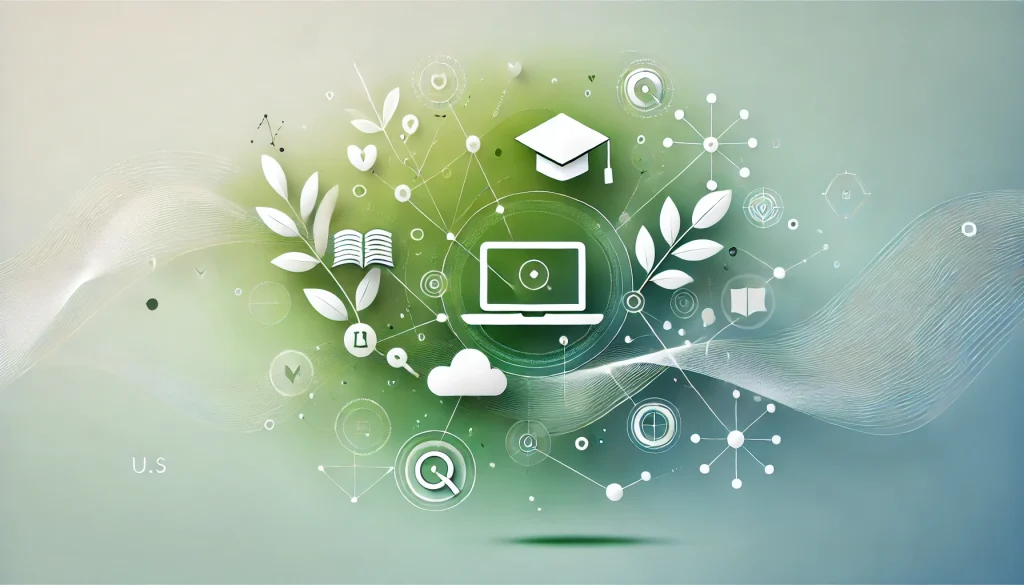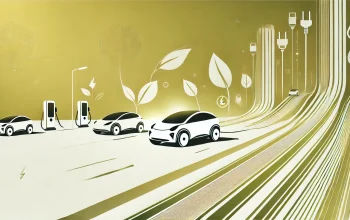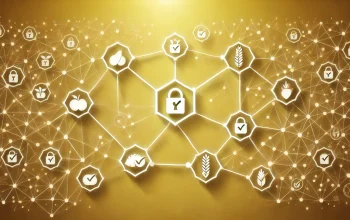Top Tech Innovations Enhancing Education in the U.S.

Introduction
Top Tech Innovations Enhancing Education is at the heart of any society’s progress, and the advent of technology has revolutionized how learning occurs. In the United States, technology has increasingly become intertwined with educational systems, from K-12 to higher education and beyond. This digital transformation, accelerated by the COVID-19 pandemic, has reshaped teaching methods, expanded access to knowledge, and provided new tools for both students and educators. However, not all tech innovations are created equal. In this article, we’ll explore the top tech innovations enhancing education in the U.S., diving into how these advancements are shaping the future of learning, improving student outcomes, and breaking down barriers to access.
Table of Contents
1. Learning Management Systems (LMS)
A Learning Management System (LMS) is a software application designed to administer, document, track, and deliver educational courses and training programs. This technology has been pivotal in facilitating online learning, which has become a staple in U.S. education. LMS platforms such as Canvas, Google Classroom, and Blackboard have become household names in schools, colleges, and universities.
- Impact on Education: LMS platforms enable educators to manage course content, communicate with students, distribute assignments, and track progress all in one place. For students, LMS offers flexibility in how and when they access their learning materials, encouraging self-paced learning.
- The Future of LMS: With the rise of artificial intelligence (AI) and data analytics, future iterations of LMS will likely integrate more adaptive learning technologies that personalize educational experiences. These systems could analyze student performance data in real-time, providing tailored feedback and resources based on individual learning needs.
2. Artificial Intelligence and Adaptive Learning
Artificial Intelligence (AI) is playing an increasingly critical role in the Top Tech Innovations Enhancing Education sector. From automating administrative tasks to offering personalized tutoring, AI is a force multiplier for educators, helping them focus more on teaching and less on logistical burdens. One of the most notable applications of AI in education is adaptive learning—a method that uses algorithms to analyze student performance and adjust the difficulty or type of content accordingly.
- AI in Personalized Learning: AI-driven platforms like DreamBox and Knewton provide adaptive learning experiences that cater to a student’s individual learning style and pace. For example, if a student is struggling with a math problem, the system will detect the difficulty and offer supplementary resources or break down the concept further.
- Benefits: This technology enhances student engagement and improves learning outcomes by focusing on areas where students need the most support. It also reduces the pressure on teachers to manage students with varying abilities in a single classroom.
- Challenges: One of the main concerns is the potential bias in AI algorithms, which may inadvertently disadvantage certain student groups. Therefore, it’s crucial for developers and educators to monitor and refine these systems continuously to ensure they are equitable.
3. Gamification in Education
Gamification involves incorporating game design elements into non-game environments to make learning more engaging and interactive. Gamification has made its mark in U.S. classrooms as teachers increasingly adopt educational games and digital platforms to motivate students and encourage collaboration.
- Popular Tools: Platforms like Kahoot!, Classcraft, and Quizlet have transformed traditional learning into interactive experiences. These tools use points, badges, leaderboards, and other game-like incentives to encourage students to participate and stay engaged in their lessons.
- Impact on Student Engagement: Gamification taps into the human brain’s reward system, making learning feel like a fun challenge rather than a chore. This method can be especially effective in engaging students who might otherwise be disengaged from traditional learning methods. Studies have shown that gamification can increase motivation, improve knowledge retention, and foster a sense of competition and collaboration in the classroom.
- Beyond the Classroom: Gamification is not just limited to K-12 education. Colleges and corporate training programs are also integrating game-based learning to improve skill acquisition, particularly in technical and professional fields like engineering, healthcare, and management.
4. Augmented Reality (AR) and Virtual Reality (VR)
Augmented Reality (AR) and Virtual Reality (VR) are two of the most exciting technologies currently shaping the future of education. These immersive tools offer new ways for students to engage with content by bringing abstract concepts to life.
- Virtual Reality in the Classroom: VR headsets, such as those made by Oculus and HTC Vive, transport students into fully immersive environments. For example, a history lesson can take students on a virtual tour of ancient Rome, while a biology class could offer an immersive journey inside the human body.
- Augmented Reality: Unlike VR, which creates a completely virtual environment, AR overlays digital content on the real world. Tools like Merge Cube and Google Expeditions allow students to interact with 3D models, enhancing their understanding of complex subjects like physics, chemistry, or geography.
- Impact on Learning: Both AR and VR offer unparalleled opportunities for experiential learning, where students can “learn by doing.” These technologies help make abstract or complex topics more concrete, allowing for a deeper understanding that goes beyond textbooks and lectures.
- Challenges: The high cost of VR headsets and AR devices can be a barrier for some schools, particularly in underfunded districts. Additionally, creating high-quality VR content requires significant resources and expertise, which can limit the adoption of this technology in smaller educational institutions.
5. Cloud Computing
Cloud computing has revolutionized how educational institutions store, access, and share data. Cloud-based platforms such as Google Workspace for Education, Microsoft 365 Education, and Dropbox have become essential tools for managing documents, facilitating collaboration, and enabling remote learning.
- Benefits for Schools: Cloud computing enables schools to store vast amounts of data without needing expensive physical servers. It also makes it easier for teachers and students to access learning materials anytime, anywhere. During the COVID-19 pandemic, cloud-based tools were crucial in maintaining continuity of education as schools rapidly transitioned to remote learning.
- Collaboration and Sharing: Cloud platforms facilitate real-time collaboration between students and teachers. Tools like Google Docs allow multiple users to edit a document simultaneously, providing opportunities for group work even in a remote learning environment. For teachers, cloud platforms offer seamless integration with other ed-tech tools, allowing for more efficient classroom management and student assessment.
- Data Security Concerns: While cloud computing offers many benefits, it also raises concerns around data privacy and security. Schools must ensure that they are using platforms that comply with regulations such as the Family Educational Rights and Privacy Act (FERPA) to protect student data.
6. Blockchain Technology
Blockchain, primarily known for its association with cryptocurrencies, is now finding applications in education. The decentralized and secure nature of blockchain makes it ideal for managing academic records, verifying credentials, and ensuring the transparency of educational achievements.
- Digital Credentials: Blockchain allows for the creation of tamper-proof digital credentials and certificates. For instance, universities can issue degrees and diplomas on a blockchain, which can be easily verified by employers or other institutions. This helps reduce the risk of fraud and enhances trust in academic qualifications.
- Student Data Ownership: Blockchain gives students more control over their academic records, allowing them to share verified information with potential employers or educational institutions without needing to go through intermediaries.
- Challenges: While blockchain offers exciting possibilities, its adoption in education is still in the early stages. The technology’s complexity and the need for widespread standardization pose significant barriers to its broader implementation.
7. Artificial Intelligence in Administrative Processes
AI isn’t just improving classroom learning—it’s also transforming administrative processes in educational institutions. From streamlining admissions to automating grading, AI is helping schools and universities save time, reduce costs, and improve efficiency.
- Automating Grading: AI-powered tools like Gradescope assist teachers by automatically grading assignments, quizzes, and exams. These systems can analyze student submissions and provide instant feedback, allowing educators to focus more on teaching and less on administrative tasks.
- Admissions and Enrollment: AI-driven chatbots and virtual assistants are increasingly being used to handle inquiries, guide students through the application process, and even provide personalized course recommendations based on a student’s academic profile.
- Administrative Efficiency: AI systems are also being used to optimize campus management, from scheduling classes and managing facilities to predicting enrollment trends and analyzing student retention rates.
8. The Rise of Online and Hybrid Learning
One of the most significant shifts in the U.S. education system in recent years has been the widespread adoption of online and hybrid learning models. Fueled by technological advancements and changing educational needs, these models offer flexibility and accessibility to a diverse student population.
- Massive Open Online Courses (MOOCs): Platforms like Coursera, edX, and Udemy offer MOOCs that provide access to high-quality education from top universities and institutions. MOOCs have democratized learning by making it available to anyone with an internet connection, often for free or at a lower cost than traditional degrees.
- Hybrid Learning: Hybrid or blended learning combines in-person instruction with online components, offering the best of both worlds. Students can benefit from face-to-face interaction with their teachers while also leveraging the flexibility and personalization of online learning.
- Impact on Accessibility: Online and hybrid learning models are particularly beneficial for non-traditional students, such as working professionals, parents, or those living in remote areas. They provide opportunities for lifelong learning and skill development outside of the conventional classroom setting.
9. The Internet of Things (IoT)
The Internet of Things (IoT) refers to a network of interconnected devices that collect and exchange data. In education, IoT is enabling “smart classrooms,” where devices such as interactive
whiteboards, smart desks, and environmental sensors create more engaging and efficient learning environments.
- Smart Classrooms: IoT devices can automate various aspects of classroom management, from adjusting lighting and temperature to monitoring student engagement. Interactive tools like SMART Boards allow students and teachers to collaborate in real-time, whether in person or remotely.
- Safety and Efficiency: IoT technologies also enhance campus safety. For example, connected cameras and sensors can monitor for potential security threats, while automated systems can ensure that buildings are energy efficient, reducing costs and environmental impact.
- Challenges: While IoT offers numerous benefits, it also raises concerns about data security and privacy, particularly when it comes to monitoring student behavior and performance.
Conclusion
Technology has become an indispensable part of the education landscape in the U.S., offering new ways to enhance learning, improve accessibility, and streamline administrative processes. From AI-driven personalized learning platforms to immersive AR and VR experiences, the tech innovations discussed in this article are transforming education for the better. However, the successful integration of these technologies requires careful consideration of challenges such as cost, privacy, and equity. As the education system continues to evolve, it is essential that educators, policymakers, and technologists work together to ensure that these innovations are used to benefit all students, regardless of background or circumstance. The future of education in the U.S. is undoubtedly bright, powered by these groundbreaking technological advancements.


